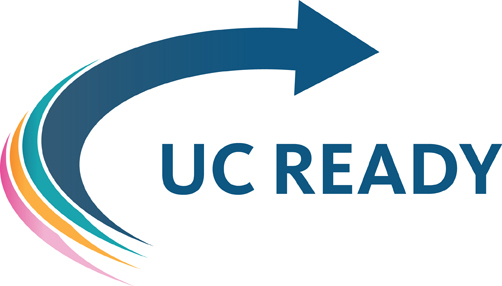Plan for mission continuity after a disaster?
Mission continuity is the ability of an organization to function and continue serving its constituents following a disaster or other major disruption. Typical continuity measures include:
- Being able to resume functions at alternate locations
- Backing up and storing data offsite
- Maintaining current contact information for staff, vendors and other persons critical to the organization’s functioning
The mission continuity planning process begins with determining your department, division, unit or lab’s critical functions, also called essential functions, that must be recovered within 30 days of a disaster or major disruption in order to prevent irreparable harm to:
- The University's ability to provide critical patient care, administrative, academic, research or service functions
- The University's reputation

UC Ready Project Overview
UC Ready is a web-based software tool that provides a step-by-step process for creating a business continuity plan. It is one component of a system-wide continuity planning program that helps UC manage risks to the University's mission caused by an adverse disruptive event.
In early 2014, The UC Ready Enhancement Project was established to improve the functionality of the UC Ready tool. The project’s goal was to identify the key enhancements necessary to continue to grow UC continuity planning efforts.
- In conjunction with this project, a decision was made to shift the strategic focus of continuity planning from the departmental level to the Campus-wide level.
The enhanced UC Ready tool incorporates all the previous tool's functionality and includes key enhancements that enable the important strategic shift to Campus-level continuity planning efforts.
Key enhancements include the ability to:
- Conduct a Business Impact Analysis (BIA) to identify the most critical functions and time-sensitive processes
- Develop a Campus-wide mission continuity plan and provide reports at the campus and system-wide levels
The Division of Homeland Security Emergency Management meets with individual plan owners to ensure seamless workability with the UC Ready tool.
- The Mission Continuity Program schedules surveys with individual plan owners to conduct the Business Impact Analysis and update the Mission Continuity Plan in the UC Ready tool.
Continuity of Essential Functions
Essential personnel are generally staff who have been identified based on their essential functions required to keep UCSF operating during an emergency such as a pandemic or an earthquake.
During an emergency, essential functions provide services that:
- Directly relate to the health, safety and welfare of the University
- Ensure the continuity of key operations
- Maintain and protect University people, properties and the environment
Continuity planning is performed on a departmental level. Senior management or control points for each department and school determine which functions are essential and how to staff those functions during an emergency or suspension of normal operations.
Once the essential staffing plan for a department is complete, the departmental senior manager in the department is responsible for communicating the information to all personnel in the department.
- Some individuals may be required to perform essential services remotely. They are usually identified in advance and notified by their supervisors.
In most cases, however, essential personnel are expected to be on-site. These include but are not limited to:
- Healthcare workers
- Researchers involved in animal care or refrigeration of sources
- Police officers and dispatchers
- Facilities services workers and maintenance crews
- Public information officers
- Housing and logistics personnel
- Environmental Health and Safety personnel
Log in to UC Ready
To log into UC Ready or request more information, contact Rowena Rodarte-Do, Mission Continuity Program Manager, at [email protected].
